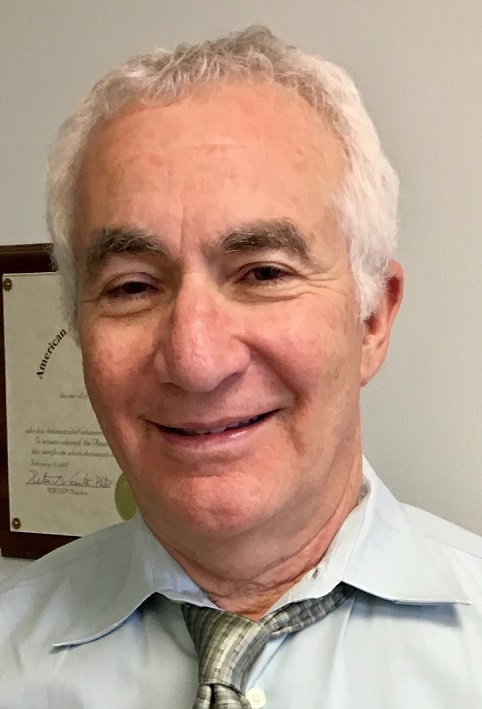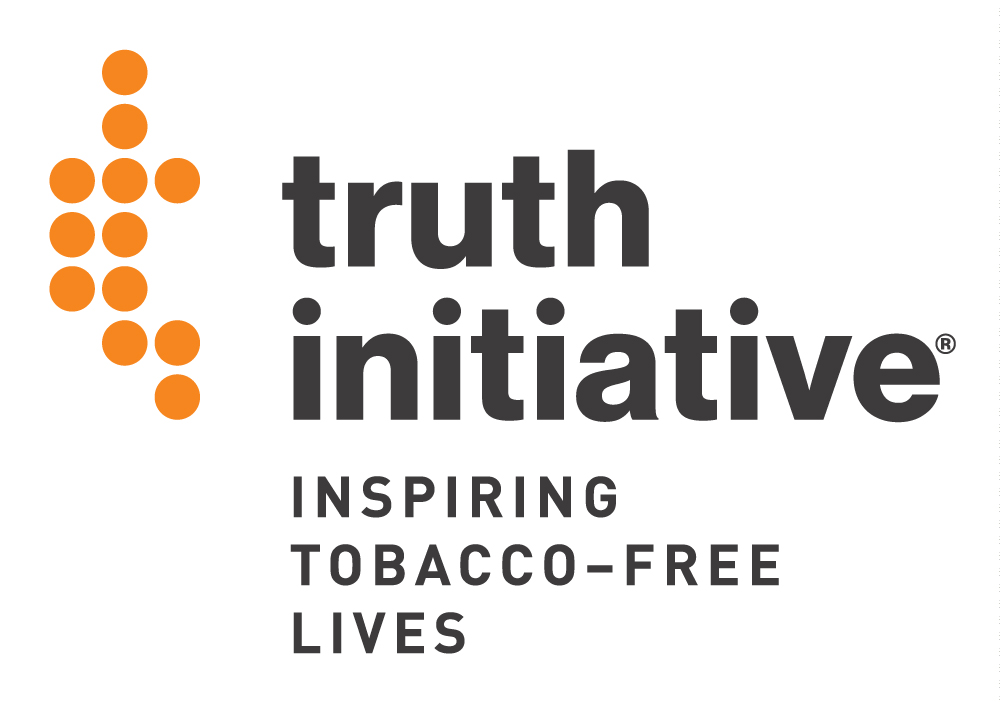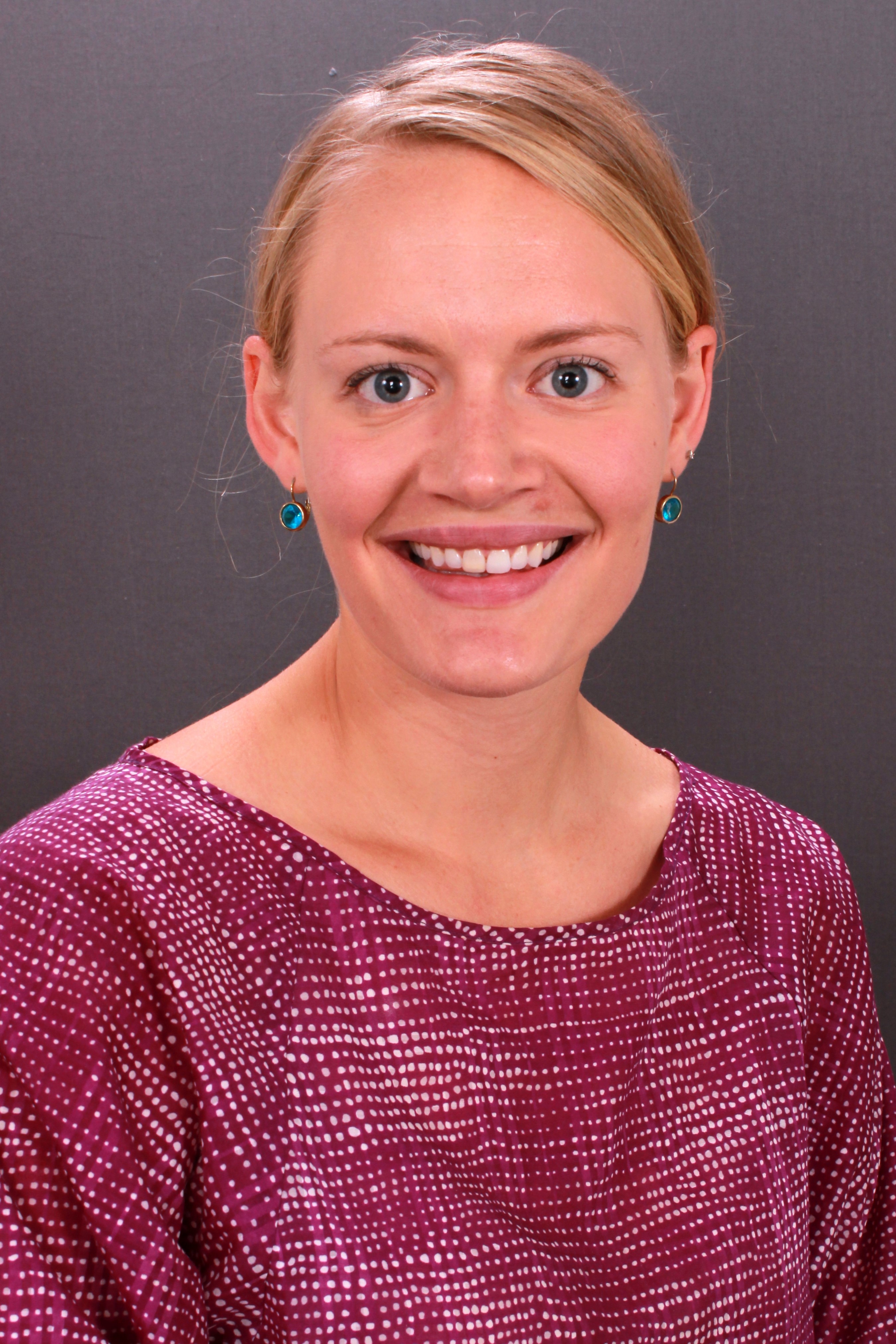President's Message: Join Me in Accelerating our Science
Michael Diefenbach, PhD, SBM President
 Michael Diefenbach, PhD
Michael Diefenbach, PhD
SBM President
I am very honored and excited to start my year as your SBM president. I hope you feel like I do, and are energized from the Annual Meeting just a few weeks ago. Immediate Past- President Sherry Pagoto, PhD, Program Chair Eric Heckler, PhD, and Co-Chair Alison Phillips, PhD, put together a thought-provoking and intellectually stimulating meeting that was attended by more than 2,000 of our members. The meeting featured more than 200 sessions and 1,127 posters. In addition, we had an active pre-conference program featuring 18 workshops and seminars. I want to particularly highlight the Mid-Career Leadership Institute, which was held for the fourth time under the expert leadership of Past-President Marian Fitzgibbon, PhD. The institute gives a selected group of individuals the opportunity to acquire leadership skills for the next phase of their careers. We will have a five-year anniversary in 2020 and I’m looking forward to hearing from the experiences of past attendees. For the first time at this year’s Annual Meeting, we added an Op-Ed Project workshop. Initiated by Dr. Pagoto and attended by about 20 members, it is the perfect example of how the meeting’s theme of “Leading the Narrative” has been translated into action. This workshop gave attendees the tools and skills to communicate our science into easy-to-understand, relatable language. I am excited to see the op-eds that will likely follow over the coming months. We will keep track of this progress and I’ll let you know the results in a future column.
Those who attended the business meeting on the last day of our Annual Meeting will remember that the theme for the coming year will be “Accelerating our Science.” I see this as a continuation of efforts in prior years to broaden the reach of behavioral medicine and to enhance our communication strategies. To achieve this vision, we are planning to ask our members to develop “Provocative Questions in Behavioral Medicine.” I would like you to think about the most pressing issues and challenges we are facing over the next five and 10 years. This means not only thinking outside “your” box, but also inside somebody else’s box. Be creative and think big. I know this can be challenging, but I think everybody has had the experience of wanting to know more about some basic processes or relationships.
While we are laying the logistical groundwork for this project, I ask you to keep the provocative questions project in your mind. If you encounter a scientific or methodological problem that you have been interested in, struggled with, or that just baffles you, make a note and consider it for inclusion into the provocative questions questionnaire when the time comes.
In addition to this new project, we are continuing to pursue opportunities that were started over the past years. We will reach out to likely users of our science in industry to expand our scientific impact, as well as broaden our financial basis. We will also engage our partners from the International Society of Behavioral Medicine in these efforts. Lastly, we are looking for a new editor for Annals of Behavioral Medicine. I am grateful to Megan McVay, PhD, new chair of the Publication and Communications Council, and past chair David Conroy, PhD, who agreed to stay on during the search process. The call for applications has gone out and more details can be found here.
In closing, I would like to mention two more points. First, I would like to thank Lindsay Bullock, the executive director of SBM, and her excellent team for their untiring efforts managing the day-to-day operations of our society and for organizing the Annual Meeting. Their outstanding behind-the-scenes work is the reason that everything keeps running so smoothly.
Second, last January’s election resulted in the selection of two excellent members to the Board of Directors. Monica Baskin, PhD, was elected president-elect and Rachel Shelton, ScD, was elected member delegate. Please join me in welcoming them to the Board.
We have a thrilling year ahead of us. I am excited about the ideas you will be generating and the provocative questions you will be asking. I am looking forward to working with you all.
Best wishes,

Congratulations to the Recipients of SBM's 2019 Achievement Awards
SBM extends a warm congratulations to the following recipients of the society’s 2019 achievement awards. Recipients formally received their awards from SBM then-President Sherry Pagoto, PhD on March 7, 2019, during SBM’s 40th Annual Meeting & Scientific Sessions at the Washington Hilton in Washington, DC.
SBM additionally congratulates new 2019 society fellows, who were also honored by Dr. Pagoto during the Annual Meeting.
SBM would like to recognize the recipients of 2019 Special Interest Group (SIG) Awards as well. Recipients were honored during individual SIG meetings at the Annual Meeting, and their names are listed below.
Distinguished Mentor Award
Alan Delamater, PhD

Distinguished Scientist Award
Julian F. Thayer, PhD

Research to Practice Award
Edwin Fisher, PhD

Behavioral Medicine Service Award
Peter Kaufmann, Phd

Jessie Gruman Award for Health Engagement
Truth Initiative

Excellence in Behavioral Medicine Training Program Award
Clinical Health Psychology Postdoctoral Fellowship at Wilford Hall Ambulatory Surgical Center

Early Career Investigator Award
Kristi Gamarel, PhD

Outstanding Dissertation Award
Michele L. Patel, PhD

Distinguished Student Awards
Excellence in Research Award
Jacklyn Foley, MS

Excellence in Service Delivery Award
Lynne Klasko-Foster

Travel Scholarship Award
Caitlin Allen, MPH; Rebecca Crochiere; Joanne Patterson, MSW, MPH; Milkie Vu, MA




C. Tracy Orleans Distinguished Service Awards
Elva M. Arredondo, PhD; Gary G. Bennett Jr., PhD; David E. Conroy, PhD; Marian L. Fitzgibbon; Eric B. Hekler, PhD; William J. Sieber, PhD
New Fellows
Melissa A. Alderfer, PhD; Belinda Borrelli, PhD; Richard A. Brown, PhD; Matthew P. Buman, PhD; Joost Dekker, PhD; Gareth R. Dutton, PhD; Bernard Fuemmeler, PhD, MPH; Erik Groessl, PhD; Megan A. Lewis, PhD; Mark A. Lumley, PhD; John M. Salsman, PhD; Marc D. Schwartz, PhD; Jamie Studts, PhD; Ana-Maria Vranceanu, PhD
Special Interest Group (SIG) Awards
Aging SIG
Outstanding Graduate Research Award
Yen Chen
Behavioral Informatics and Technology SIG
Outstanding Student Abstract Award
Rebecca Crochiere
Overall Outstanding Abstract Award
Shirlene Wang
Cancer SIG
Outstanding Student Abstract Award
Echo L. Warner, MPH
Senior Investigator Award for Outstanding Contributions to the Field
Victoria L. Champion, RN, PhD
Cardiovascular Disease SIG-in-formation
Kenneth E. Freedland Founder's Award
Kenneth E. Freedland, PhD
Child and Family Health SIG
Lifetime Achievement Award
Kenneth Tercyak, PhD
Outstanding Abstract by a Full Member of the Child and Family Health SIG Award
Bridget Parsons
Outstanding Abstract by a Student/Trainee Member of the Child and Family Health SIG Award
Marissa Kobayashi
Complementary and Integrative Medicine SIG
Outstanding Trainee Award
Daniel Hall, PhD
Early Career Investigator Award
Neha Gothe, PhD
Distinguished Scientist Awards
Suzanne Danhauer, PhD
Ana-Maria Vranceanu, PhD
Evidence-Based Behavioral Medicine SIG
Outstanding Trainee Award in Evidence-Based Behavioral Medicine
Jimikaye Courtney
Health Decision Making SIG
Outstanding Trainee Abstract
Ashley Araiza
Health Equity SIG
Outstanding Trainee Poster Award
Jeanean Naqvi
Lifetime Achievement Award
Amelie Ramirez, MPH, DrPH
Mentor Award
Clement Gwede, PhD, MPH, RN
Service Award
Shannon Christy, PhD
HIV and Sexual Health SIG
Top Rated Student/Trainee Poster Abstract
Satyanand Satyanarayana, JD
Top Rated Student/Trainee Paper Abstract
Raymond Moody, MA
Integrated Primary Care SIG
Student/Postdoctoral Fellow Travel Awards
Briana Cobos, MA
Allison Lewinski, PhD, MPH, RN
Military and Veterans Health SIG
Patricia H. Rosenberger Outstanding Student/Fellow Abstract in Military and Veterans Health
Jordan Ellis, MA
Sharon Lee
Multiple Health Behavior Change SIG
Outstanding Student Abstract Award
Carina Mnich
Multi-Morbidities SIG
Outstanding Abstract Awards
Kaylee Crockett, PhD
Emily Hamburger, MEd
Rebecca Saracino, PhD
Obesity and Eating Disorders SIG
Outstanding Student Abstract Award
Andrea Brockmann, MA
Outstanding Postdoctoral Fellow Abstract Award
Christine Mason, PhD
Optimization of Behavioral Interventions SIG
Student/Trainee Optimization of Behavioral and Biobehavioral Interventions Research Award
Hallie Espel-Huynh
Outstanding Optimization of Behavioral and Biobehavioral Interventions Research Award
Bonnie Spring, PhD
Outgoing SIG Chair Award
David Cavallo, PhD, MPH, RDN
Pain SIG
Best Trainee Abstract Award
Brittany Bannon, PhD
Best Trainee Abstract Award, 1st Runner Up
Samantha Farris, PhD
Best Trainee Abstract Award, 2nd Runner Up
Matthew Schumann, PhD
Physical Activity SIG
Student Research Award
Madhura Phansikar, MA
Local Innovator Award
Washington Area Bicyclist Association
Outgoing SIG Chair Award
Siobhan Phillips, PhD, MPH
Population Health Sciences SIG
Trainee Award for Outstanding Abstract Submission
Irene Van Woerden, MS
Award for Outstanding Abstract Submission
Xuan Zhu, PhD
Sleep SIG
Outstanding Abstract Award
Kellienne Sita
Outstanding Abstract by a First-Time Submitter Award
Christine Smith-Mason, PhD
Student SIG
Best Research Abstract Award
Guillaume Fontaine, RN, MSN
Best First Time Abstract Student Award
Jordan Ellis, MA
Travel Award
Eric Layland, MS
Theories and Techniques of Behavior Change Interventions SIG
Trainee Abstract Award
Andrea Mendoza, MPH
Trainee Abstract Award Finalists
Emily Feig, PhD
Courtney Stevens, PhD
Outgoing SIG Chair Awards
Susan Czajkowski, PhD
Alison Phillips, PhD
Women’s Health SIG
Leading the Narrative Award
Brooke Libby, MPH
Outstanding Student Abstract Award
Alycia Boutté, MPH
Outstanding Abstract Award
Emily Hohman, PhD
Most Promising Project Award
Susan Ramsey, PhD
Expansion of Women’s Health Research: Addressing Maternal Distress in the NICU
Victoria A. Grunberg, MS & Pamela A. Geller, PhD; Women's Health SIG

The Women’s Health SIG includes members with research interests that span diverse areas of health psychology. One area that is garnering increased attention among practitioners and researchers in the field, as well as public health groups and policy makers, is perinatal mental health. Recent decades have shown a rise in research and clinical attention around issues of childbearing, with a particular focus on postpartum depression and anxiety. In particular, research on high risk groups, including women with infants hospitalized in a Neonatal Intensive Care Unit (NICU), is expanding exponentially, generating opportunities for SBM members to enter this specialized field and extend their research programs into this arena.
“NICU mothers” report higher levels of post-traumatic, depressive, and anxiety symptoms (40-50%) compared to mothers with healthy infants (10-15%).1,2 Further, NICU mothers, especially those with high levels of anxiety, can demonstrate impaired mother-infant interaction and tend to engage in more intrusive parenting styles, which can negatively impact child development.4 The often unanticipated nature of the birth experience and NICU hospitalization, stress-inducing sights and sounds in the NICU, limitations on mother-child interactions (e.g., holding and feeding), unpredictability of medical procedures, and uncertainty of health outcomes in light of higher survival rates among medically complex infants, serve to create a traumatic environment.3,4
Women’s Health SIG co-chair Dr. Pamela Geller and her Women’s Health Psychology Lab at Drexel University are working in collaboration with Dr. Chavis Patterson (Director of Psychosocial Services) and NICU colleagues at The Children’s Hospital of Philadelphia (CHOP) to develop services and implement research geared to address maternal distress. We have developed and implemented a psycho-educational group intervention for parents during the first week of their child’s NICU hospitalization.3 The group encourages social support and provides information about family-centered neurodevelopmental care, medical providers, how to communicate effectively with the medical team, the emotional experience, and adaptive psychosocial coping strategies. A quality-improvement study screening parents for depression and trauma and connecting them to services within the first two weeks of their child’s NICU hospitalization is ongoing. The goal is to develop a standard of care for parental mental health screenings within a children’s hospital. A mindfulness-based stress-reduction intervention targeting mothers of infants with chronic lung disease also is being implemented (led by Christina DiSanza, MA; 2017-2018 Women’s Health SIG Student Liaison). “Mindful NICU” utilizes techniques such as mindful movement, awareness, and self-compassion to provide NICU mothers with tools to manage their mental health symptoms.
The fact that family systems influence child development years after NICU hospitalization has led to one of the first studies conducted at CHOP’s Neonatal Follow-Up Program, which provides outpatient medical services and developmental assessments for medically complex children post-NICU discharge. Specifically, a doctoral research study (led by Victoria Grunberg, MS, doctoral candidate and current Women’s Health SIG Student Liaison) is examining how maternal mental health, parental couple relationship, parenting alliance, mother-child relationships, family impact, and resources contribute to child cognitive and socio-emotional development. Together, these NICU-based projects aim to improve psychosocial services for NICU mothers and their children and families; something that is not always provided given that the child is the patient in the NICU.
Of interest to SBM members may be that the high prevalence of maternal distress in the NICU and its immense impact on maternal/family functioning and child developmental outcomes has raised awareness of the need for expanded service as well as the need for continued efforts to research maternal mental health in the NICU to improve child and family sequelae during and following hospitalization.3,5,6 Interdisciplinary research and collaborations across medical departments can help to overcome challenges associated with collecting data on mothers in the NICU. A more integrated and standardized approach to mental health treatment in the NICU will help to normalize maternal distress, identify mothers and families who would benefit from psychosocial treatment, and provide more effective services in this setting. SBM colleagues who are interested in learning more about the recent momentum of psychologist clinical and research activity in the NICU setting, opportunities for employment, or potential research collaborations, are invited to contact the authors.
References
- Agostini, F., Neri, E., Dellabartola, S., Biasini, A., & Monti, F. (2014). Early interactive behaviours in preterm infants and their mothers: influences of maternal depressive symptomatology and neonatal birth weight. Infant Behavior and Development, 37(1), 86-93.
- Anokye, R., Acheampong, E., Budu-Ainooson, A., Obeng, E. I., & Akwasi, A. G. (2018). Prevalence of postpartum depression and interventions utilized for its management. Annals of general psychiatry, 17(1), 18.
- Geller, P. A., Bonacquisti, A., & Patterson, C. A. (2018). Maternal Experience of Neonatal Intensive Care Unit Hospitalization: Trauma Exposure and Psychosocial Responses Motherhood in the Face of Trauma (pp. 227-247). New York, NY: Springer.
- Stephens, B. E., & Vohr, B. R. (2009). Neurodevelopmental outcome of the premature infant. Pediatric Clinics, 56(3), 631-646.
- Feldman, R., & Eidelman, A. I. (2009). Biological and environmental initial conditions shape the trajectories of cognitive and social-emotional development across the first years of life. Developmental Science, 12(1), 194-200.
- Weiss, S. J., & Chen, J.-L. (2002). Factors influencing maternal mental health and family functioning during the low birthweight infant's first year of life. Journal of Pediatric Nursing, 17(2), 114-125.
Accelerate your Behavioral Medicine Research Using Machine Learning
April Idalski Carcone, PhD; Behavioral Informatics and Technology (BIT) SIG

Chances are you’ve probably heard the term “machine learning”, but what exactly is it? And, why should behavioral scientists care about it? A recent article in Medium, an online publishing platform, described how computer scientists are leveraging behavioral science to increase website traffic and app usage, explaining behavioral science as “an interdisciplinary approach to understanding human behavior via anthropology, sociology and psychology”.1 It’s time for behavioral scientists to integrate computer science, specifically machine learning, into our interdisciplinary mosaic. Here’s why.
Simply put, machine learning is a class of statistical analysis techniques in which a computer "learns" to recognize patterns in data without being explicitly programmed to do so. A familiar example of machine learning at work are those advertisements that populate your favorite social media site or web browser searches. Have you ever thought “Wait a minute… how does X know I shop at Y?!” Well, you were just browsing Y’s website allowing the algorithms programmed into X’s website to learn that you like to shop at Y. Using this knowledge, X’s algorithms will now target Y’s advertising to you. While in the context of internet browsing, the use of machine learning models may be helpful, annoying, or even disturbing, these models have powerful implications for behavioral science. For example, at the 2019 SBM Annual Meeting, behavioral scientists described how they used machine learning to interpret data from wearable sensors, such as quantifying screen time based on color detection or identifying eating patterns among participants with obesity. Others used machine learning models to predict eating disorder treatment outcomes from medical chart data and examine the relationship between affect and activity levels.
There are two broad classes of machine learning models – supervised and unsupervised. Supervised machine learning models use coded data (“training” data, in computer science speak) to learn a mathematical model to map inputs (raw data) to the result of a particular cognitive task, which is represented as a code or “label”. Through this process, computers mimic the decision-making process human coders use to perform the same task, with accuracy comparable to human coders2 but at a fraction of the time required. However, this means that a supervised machine learning model is only as good as the data you use to train it. To illustrate, my colleague, Alexander Kotov PhD and I have developed a series of supervised machine learning models to assign behavioral codes to clinical transcripts of patient-provider communication. Human coders had previously coded transcripts of adolescent patients and their caregivers engaged in a weight loss intervention using a code scheme that operationalizes patient-provider clinical communication according to the Motivational Interviewing framework. We used this coded data to train a machine learning model to recognize and assign these behavioral codes.3 The inter-rater reliability between the man and the machine was k=.663, compared to k=.696 between human coders.4 We then tested the model in a novel clinical context, HIV clinical care.5 With no modification, our model accurately identified 70% of patient-provider behaviors (k = .663) compared to human coders. We are currently working to develop additional machine learning models to fully automate the behavioral coding process, including models to parse transcripts into codable segments6 and analyze the sequencing of communication behavior.7 This is just one example of how behavioral scientists have leveraged supervised machine learning models. Others have used this approach to analyze clinical transcripts in the assessment of treatment fidelity,8 biomedical data to enhance fMRI diagnostic prediction,9 and to predict mental health outcomes (e.g., suicide) from medical chart data10 and developmental outcomes (e.g., developmental language disorders) from screening instrument data.11
Unsupervised machine learning models contrast with supervised models in that they use mathematical models to discover patterns in uncoded data.12 The ability to use uncoded data is a real strength of unsupervised models because of the resource investment required to construct a training coded data set. However, with no training data to compare model performance to, a big drawback of unsupervised machine learning is the inability to assess the accuracy of the model. Rather, computer scientists rely on content area experts, such as behavioral scientists, to guide decisions regarding model accuracy. Some examples of unsupervised machine learning applications include identifying people at high risk for developing dementia from population-based survey data,13 patients at high risk for death due to chronic heart failure,14 and clinical subtypes of Chronic Obstructive Pulmonary Disease from electronic medical records.15
The primary strengths of machine learning models are their ability to process large amounts of data very efficiently and their ability to detect very complex patterns in data. Machine learning analytics far outstrip the abilities of even the best-trained team of human analysts giving them the potential to accelerate behavioral research to unprecedented rates. On the other hand, because models are developed from the data, an inherent weakness of machine learning models is the integrity of the data set used – change the data, change the model. Thus, the best models are built on large, high quality data sets, which can be difficult and resource intensive to construct. For example, the initial training data file in the Motivational Interviewing example above was composed of only 38 interactions and required nearly a year to code, after the year needed to develop the coding scheme and train the coders! Model interpretability can also be an issue. The logic underlying some models’ decision-making may not be easily traceable or follow a linear path, particularly in more complex unsupervised models which many have thousands, if not more, rules. This complexity makes it difficult to assess the accuracy of some machine learning models.
The examples mentioned here are just the tip of the iceberg. There are many applications of machine learning models with vast implications for both research and clinical care. The Human Behaviour Change Project is using machine learning to cull the published literature to inform behavior change intervention and theory. The Behavioral Research in Technology and Engineering (BRiTE) Center is home to several technology driven projects to improve mental health services. NIH’s Big Data to Knowledge (BD2K) program encourages researchers to engage in data-driven discovery using technology-based tools and strategies, like machine learning, to analyze the ever-growing corpus of complex biological data. These initiatives are the foundation of precision medicine.
So, what are you waiting for? Go find a computer scientist and start harnessing the power of the machine! Still unsure about how machine learning models might augment your work? In addition to the articles referenced here, SAS has a free downloadable white paper that is a great primer on machine learning and its many applications. It’s a quick read making it a great way to get started thinking about how machine learning might inform your work.
References
- Hassan: Behavioral Science & AI: The Good, The Bad & The Ugly. Retrieved January 3, 2019, 2019 from https://medium.com/datadriveninvestor/behavioral-science-ai-the-good-the-bad-the-ugly-656d2312ce71
- Bishop CM: Pattern Recognition and Machine Learning. New York: Springer, 2007.
- Hasan M, Kotov A, Carcone AI, et al.: A study of the effectiveness of machine learning methods for classification of clinical interview fragments into a large number of categories. Journal of Biomedical Informatics. 2016, 62:21-31.
- Idalski Carcone A, Naar-King S, Brogan K, et al.: Provider communication behaviors that predict motivation to change in African American adolescents with obesity. Journal of Development and Behavioral Pediatrics. 2013, 34:599-608.
- Idalski Carcone A, Hasan M, Alexander G, et al.: Developing Machine-Learning Models for Behavioral Coding. Journal of Pediatric Psychology. in press.
- Hasan M, Kotov A, Naar S, Alexander GL, Idalski Carcone A: Deep Neural Architectures for Discourse Segmentation in E-Mail Based Behavioral Interventions. American Medical Informatics Association (AMIA) 2019 Informatics Summit. San Francisco, CA: American Medical Informatics Association, 2019.
- Hasan M, Carcone AI, Naar S, et al.: Identifying Effective Motivational Interviewing Communication Sequences Using Automated Pattern Analysis. Journal of Health Informatics. in press:1-21.
- Atkins DC, Steyvers M, Imel ZE, Smyth P: Scaling up the evaluation of psychotherapy: evaluating motivational interviewing fidelity via statistical text classification. Implementation Science. 2014, 9:1-11.
- Deshpande G, Li Z, Santhanam P, et al.: Recursive cluster elimination based support vector machine for disease state prediction using resting state functional and effective brain connectivity. PloS one. 2010, 5:e14277.
- Adamou M, Antoniou G, Greasidou E, et al.: Mining Free-Text Medical Notes for Suicide Risk Assessment. Proceedings of the 10th Hellenic Conference on Artificial Intelligence. Patras, Greece: ACM, 2018, 1-8.
- Armstrong R, Symons M, Scott J, et al.: Predicting Language Difficulties in Middle Childhood From Early Developmental Milestones: A Comparison of Traditional Regression and Machine Learning Techniques. Journal of speech, language, and hearing research: JSLHR. 2018:1.
- Hofmann T: Unsupervised Learning by Probabilistic Latent Semantic Analysis. Machine Learning. 2001, 42:177-196.
- Cleret de Langavant L, Bayen E, Yaffe K: Unsupervised Machine Learning to Identify High Likelihood of Dementia in Population-Based Surveys: Development and Validation Study. Journal of medical Internet research. 2018, 20:e10493-e10493.
- Tokodi M, Schwertner W, Perge P, et al.: Unsupervised Machine Learning Algorithm to Identify High and Low Risk Patients Following CRT Implantation. Journal of the American College of Cardiology. 2018, 71:A947.
- Pikoula M, Quint J, Direk K, et al.: Discovery of Novel COPD Subtypes Via Cluster Analysis of Clinical Features Extracted from Electronic Health Records. D13. IMPROVING DIAGNOSIS, CARE QUALITY, AND ADHERENCE IN COPD: American Thoracic Society, 2018, A6170-A6170.
Quick Stats: Where to Go When you Need National or State Numbers on Demographics, Disease Burden, or Behavioral Risk Factors
Jess Gorzelitz MS, Population Health Sciences (PHS) SIG Student Liaison, Em V. Adams, PhDc, CTRS, PHS SIG Student Liaison, and Molly E. Waring, PhD, PHS SIG Chair

Do you ever find yourself in need of national, state, or local estimates of disease burden, risk factors, or behaviors to communicate the need for your research? We have compiled below online resources that provide quick access to national, state, or local population health statistics relating to disease burden, demographics, or behavioral risk factors. These tools are great resources for preparing presentations, writing op-eds, preparing policy briefs, making visits to policymakers, or justifying your planned participant enrollment in a grant proposal.
US Census American Fact Finder: Here you can find population facts (e.g., age, race/ethnicity, sex, households, housing characteristics, income) by state, county, city, town, or zip code; draws on data from the US Census and the American Community Survey. For example, according to the 2010 US Census, Atlanta, GA, had just over 420,000 residents, with an average household size of 2.11 people.
Behavioral Risk Factor Surveillance System: Use this data to produce charts or tables for specific chronic disease or health behaviors for the nation or specific states, and by year; create tables examining prevalence of health behaviors or risk factors within a second variable. For example, in 2017 approximately 69% of adults from Washington, DC had consumed at least one alcoholic drink in the past 30 days.
National Health Information National Trends Survey: In this database, you can find estimated population frequency and percent among US adults related to cancer-related information and health communication. For example, 9% of US adults have used a tanning bed or booth in the past 12 months.
NCI State Cancer Profiles: This site contains interactive maps and tables relating to cancer demographics, screening & risk factors, cancer knowledge, and cancer incidence, prevalence, & mortality by US state. For example, Kentucky has the highest rate of colorectal cancer (48.4 cases per 100,000 population) and Utah has the lowest incidence (27.9 cases per 100,000 population).
NCI Tobacco Policy Viewer: This tool presents mapping, query, and download of historical smoke-free policy data in the US, including data for US states, counties, and cities, types of indoor areas that are smoke-free, length of time since the smoke-free policy was enacted, and population coverage of each policy. For example, in 2010, Wisconsin enacted a law against smoking in workplaces.
While this list is not exhaustive, it provides a starting point to find estimates for risk factors, trends, and disease incidence, and may useful to SBM members as we strive to lead the narrative in our areas of expertise.
Advice from an Expert in HIV Research: Interview with Dr. Seth Kalichman
Kimberly M. Nelson, PhD, MPH, HIV and Sexual Health SIG Co-Chair
Dr. Seth Kalichman is a Professor of Psychological Sciences at the University of Connecticut. His research on preventing the spread of HIV/AIDS and caring for those affected by the HIV epidemic has been continuously funded by the National Institutes of Health since 1992. He is the editor-in-chief of AIDS and Behavior. We asked him his thoughts on the field of HIV research as well as advice for researchers starting out.
What are the hot topics in HIV research now and moving forward?
What keeps me interested in HIV behavioral research is that everything about HIV is always changing. The future is therefore hard to predict. But, of critical importance today is stigma as it impedes HIV prevention, testing and treatment. Despite countless theories, conceptual models, frameworks, and measures it’s shocking how little we know about HIV stigma and how it impacts health. There is no real consensus on how different stigmas interact, how those intersections are measured, and there are no effective interventions for limiting the harms of intersectional stigma. Another pressing problem is how to address alcohol use by people who have HIV as well as those at-risk. Even moderate alcohol use is related to health complications in people living with HIV, and such drinking is a barrier to HIV preventive behaviors. Interventions are needed to address moderate alcohol use in order to reduce HIV risks and improve HIV health outcomes.
What advice would you give someone starting out in the field?
It is important to have a passion for what you want to focus on in research. The trick is to figure out that passion. When I was starting out, I had a passion for the populations most affected by HIV, the social injustices of HIV and my own desire to care about something most people did not care about. That passion has carried me through my career. Once you figure out your passion, find a mentor who shares it. There are several excellent research centers with critical masses of HIV researchers, and most of them have postdoctoral training opportunities. I would suggest looking at those centers carefully as a starting point; but not a stopping point. As long as I followed my passion for HIV behavioral research everything else seemed to follow – jobs, publishing, grants etc. Persistence is the key to research success and only passion will fuel that persistence. There are so few external reinforcements for research, it has to come from inside.
What are the most important factors that lead to success in publishing?
Publishing in respectable peer-reviewed journals is the currency for success in any research career. I believe there are many factors involved in publishing, including: (a) Be relevant. No one paper will be relevant to all journals. Finding the right home for a paper is a process. If you don’t believe in a paper, don’t try to publish it. But if you believe in it, don’t stop trying until it is published; (b) Be succinct. Few people will be as interested in your ideas as you are; (c) Be an objective critic of your own work. Ask others for feedback, but take a step back and look at your paper as if it were not yours; (d) Be open to criticism from reviewers and editors. Do not get too attached to your words. Peer review is a contact sport. Put on your helmet, be able to take a hit, and make your paper better.
Lab Hacks: Innovative Success Techniques for Running a Productive Lab
Sarah E. Snider, PhD, Alexandra M. Mellis, Bradley Appelhans, PhD, Leonard H. Epstein, PhD, and Warren K. Bickel, PhD, Trans-Disease Processes SIG members

Running a successful and productive laboratory is a skill set that must be learned and mastered on the job. While traditional success activities--such as holding and leading regular team meetings, consistent grant writing and collaboration, and conference attendance--each provide value, how do successful PI’s and their labs stay accountable and consistently inspired to create new ideas? The Transdisease Processes SIG (?) set out to collect “lab hacks” from PI’s at different stages in their career to harness innovative success and productivity techniques for running a lab.
Hack #1:
“Form a weekly accountability group with another early-career faculty. Hold each other accountable to making progress towards tasks that do not typically have accountability built into the process (e.g., papers, grants). This will help you keep making progress towards the most important parts of your career when small, daily tasks threaten to take up your time.”
Melissa Crane, PhD
Assistant Professor of Preventive Medicine
Rush University Medical Center
Hack #2:
“I treat my desk as expensive, prime property (like Chicago’s Lake Shore Drive). When working, only the task at hand is on my prime property. All other tasks are relegated to other ‘neighborhoods’. This focuses my attention and minimizes feelings of being overwhelmed.”
Lynda H. Powell, PhD
The Charles J. and Margaret Roberts Professor of Preventive Medicine
Rush University Medical Center
Hack #3:
“My lab is training post-doctoral (neuroscience, applied behavior analysis, cognitive science) and graduate students (clinical psychology, community health, and health behavior) in a team science environment. The breadth of expertise and interests is by design. The lab is organized by grants, in which each grant has a coordinator, staff, and graduate or postdoctoral trainees. Every other week the lab has an idea playground in collaboration with other faculty. Presenters need to read outside of their narrow areas of expertise to present NEW ideas to the group.”
Leonard H. Epstein, PhD
SUNY Distinguished Professor and Division Chief, Behavioral Medicine
Department of Pediatrics
University at Buffalo
Jacobs School of Medicine & Biomedical Sciences
Hack #4:
“The most important lab hack that I have implemented has resulted from one of the objects of my research; namely, the discounting of the future. If almost everyone discounts the future, including the excellent and ambitious individuals working in my lab, then to help them to be more productive, I decided to arrange more proximal goals and deadlines. To accomplish this, I instituted 100-day plans. Every 100 days, we have a multi-hour meeting for everyone in the lab. I provide lunch and we plan everything that the lab has to do in the next 100 days (e.g., how many participants need to be recruited for each study, what data needs to be analyzed, what presentations developed, what grant or manuscripts need to be submitted). Each member of the team comes up with the goals that they are responsible for. Then every 25 days, we briefly review and update goal status. We strive to meet 80% of our goals by the end of the 100 days. If we succeed, we are happy, and if we missed our mark we address why and improve. We have recently planned our 28th 100 days and in my view, this process is a driver of my lab’s success.”
Warren K. Bickel, PhD
Virginia Tech Carilion Behavioral Health Research Professor
Director, Addiction Recovery Research Center
Fralin Biomedical Research Institute at VTC
Educational Opportunities in Ethics and Values at SBM
Education, Training, and Career Development (ETCD) Council Corner
Sherri Sheinfeld Gorin, PhD, FSBM, Chair, SBM Ethics Working Group; ETCD Council member
“Scientists are in a unique position to lead the development of a responsive ethical infrastructure and to inform stakeholders about how to innovate in a way that is pro-ethics, pro-tech and pro-humanity.”
(Sherry Pagoto & Camille Nebeker, 2019).
Welcome to the “Education, Training, and Career Development (ETCD) Council corner!” In each issue of Outlook, the ETCD provides SBM members with opportunities and support to enhance their training and career development in behavioral medicine. In this issue, we explore the training opportunities for the members of SBM — particularly those who work at the intersection of digital health and behavioral health — who may encounter special challenges to privacy, confidentiality, and equity. Given these challenges, how can SBM help us to continue to serve the best interests of our patients, research participants, organizations, and society at large?
In June, 2017, the leadership of SBM approved the formation of an Ethics Working Group (EWG) to help advance SBM's ethical and responsible practices, particularly related to digital health. The increasing involvement of industry at the intersection of health technology and digital research-- combined with new opportunities for SBM collaboration-- introduces new and unique challenges to our organization as well as its members.
Each of us faces complex ethical dilemmas with the massive growth of digital health technologies, including social media and wearable sensors. Further, with novel advances in artificial intelligence and digital phenotyping, combined with an insufficient regulatory infrastructure, SBM members and those whom they encounter in research and clinical settings face new potential risks to privacy and data confidentiality. High profile cases, such as the Cambridge Analytica data breach and Facebook’s emotional contagion study have negative impacts on our scientific community, affecting society's view of all of us.
We must take responsibility--in our role as researchers--to be in front of the digital health technology issues and practice anticipatory intelligence to the extent possible. Through ethical standards, we may promote a variety of other important moral and social values, such as serving the public good, evidence-based decision-making, consonance of interests, distributive justice, autonomy, integrity, transparency, and accountability.
One of the major activities of the EWG has been educating our members, to guide them as they face these daunting ethical challenges. In our presidential symposium at SBM2019, we – Drs. Sheinfeld Gorin (chair), Solomonides, Vitak, Hughes Halbert, Torous, and Paltoo (discussant) – highlighted the implications of ubiquitous and pervasive digital technologies for clinicians, researchers, IRB's, consumers, and patients. We presented an evaluation approach for behavioral health apps that enriches the process of informed consent.
At our SBM2019 mid-day meeting, co-sponsored with ETCD, we discussed the accomplishments of our EWG to-date and our future plans. Together, we examined the failed medical device company Theranos, within an ethics risk/benefit framework. We emphasized the importance of peer-reviewed science for developing technologies. Similarly, at our citizen science panel, co-led with AMIA, we discussed the ethical questions at the core of this enlarging approach.
Please join us at our forthcoming EWG webinar:
Digital Health Decision-Making Checklist: Designed for Researchers
Date: April 18, 2019
Time: 1:00 p.m. ET
Register at: https://sbm.execinc.com/edibo/BCWebinars
Getting by With a Little Help from Your Friends: A Model for Peer Mentoring Groups
Felicity WK Harper, PhD, and Lara Traeger, PhD, Cancer SIG members

For the last 10 years, the Cancer SIG Education and Training Committee has developed offered a range of career development opportunities for members. From webinars to conference panels to preconference workshops, the Committee has offered tips on mentoring, career development, grant writing, and work-life balance.
Our newest initiative focuses on developing opportunities for peer mentoring. While professional mentors offer critical career and research advice, peer mentoring can offer a wealth of benefits including practical advice, support, and information.
The idea for a peer mentoring program came out of a discussion at an annual conference about the limited number of year-round mentoring opportunities. In an attempt to bridge that gap, we piloted a peer mentoring group with a very simple goal: monthly phone calls with a group of 8-10 people with a common interest. The initial test group was composed of 8 women who were mid-career (in addition to the authors, members were: Catherine Alfano, Kristi Graves, Aimee James, Shelby Langer, Elyse Park, and Melinda Stolley). To maximize the feasibility, the group was designed to take no more than an hour once month, and a moderator was nominated to coordinate the call. Each call has a set agenda: 5-min check-in, pre-selected topic generated by the group’s interests, and 5-min check out to set monthly intentions.
Topics have included directed readings (e.g., “Energy Management,” “Essentialism”) and guest speakers as well as focus on specific issues such as increasing productivity, negotiating promotions, balancing work and life, developing “reach” goals, redefining productivity, and setting research priorities.
At the end of each group, members set an intention for the next call. Designed to be provide a focus during the coming month, intentions can be either a specific goal or task (draft a manuscript, write program proposal, zero inbox) and a particular mindset (practice patience, be on time, find more joy at work).
Members of the initial group, now in its third year, have reported increases in productivity, work satisfaction, and career advancement along with benefiting from a lot of insight, advice, and practical strategies including the following:
- Take a brain break. There will be times when you feel behind or overwhelmed, and a grant deadline is looming. Sometimes you need to step back – take a walk, sit in the sun, read a book, cook a nice meal – and come back to your work later. A couple hours of break will allow you to come back with a fresh perspective, and you will be more productive and produce higher quality work.
- Do only the essential things. Think about where you’re want to get your As and Bs and where you’re ok getting Cs and Ds.
- Start at the end. Think about what you want to accomplish (whether it’s writing a paper or grant application) writing up a manuscript, reporting on a study) and work backwards.
- Do what you love more of the time than not.
- Leadership is about setting an agenda, engaging people’s input, pulling it all together with specific next steps. Leadership is not about doing it all yourself.
- Set expectations when starting to work with new students, trainees, or research staff. Tell them what you need and how you like to work and ask them for their expectations and things they need to do their work. It’s so much less stress to have expectations clear at the beginning rather than dealing with frustration later when they are not doing things the way you want.
- Leave no doubt in people’s minds why you are here.
- Focus on the process and not the outcome.
- Find something that makes you feel passionate – ideas, initiatives, projects.
- Celebrate small things as successes; big things don’t happen that often.
- Be clear about what you need from people.
- Don’t work harder than your staff to engage them in their work.
- You can always move your boundaries; they aren’t set in stone.
- Learn to say “no” sooner.
- Put on your own mask before you help others.
Our committee is eager to share the peer mentoring model with others who are interested in starting a group of their own. The program is designed to be straightforward, easy to implement, and most importantly, helpful. SBM will even host the calls for you. Please contact Felicity Harper harperf@karmanos.org for more information.
Combining Physical Activity Promotion and Sustainable Development - What’s Behavioral Medicine’s Role?
Carina Mnich, Student SIG member

“Improving health and quality of life through proven behavioral sciences” is stated as the purpose on SBM’s website. To achieve this goal, physical activity (PA) promotion has been a SBM core topic for many years. Looking at the broader picture, sustainable development (SD) is also a core aspect when it comes to health and life quality. To clarify, SD does not refer to behavior maintenance, but to the SD definition of the Brundtland report which states that SD is “to ensure that it [humanity] meets the needs of the present without compromising the ability of future generations to meet their own needs” (World Commission on Environment and Development, 1987). SD is divided into three dimensions (Munasinghe, 1993). People usually connect SD to the environmental dimension, that is maintaining the functioning of natural systems. The other two dimensions: comprising maintaining and promoting social welfare and individual well-being (social SD); and generating a maximum of income while at least maintaining the capital being used (economic SD), are usually neglected (Munasinghe, 2002). Both PA and SD are global challenges concerning future health and environmental development. Therefore, the following outlines a reciprocal relationship between PA and SD and discusses the possibility of combining PA promotion and SD.
The third goal out of 17 SD goals from the United Nations (UN) Agenda 2030 – addressing global challenges – states that a healthy life and well-being should be ensured until 2030. This includes the reduction of premature mortality due to non-communicable diseases by one third through prevention and health promotion (UN, 2015). While this goal is most clearly related to PA, the UN agenda also shows that the SD goals are interrelated (UN, 2015). This means that one goal, cannot be achieved without considering the others. Examples for other goals are no poverty, gender equality, inclusive and equitable education, productive and decent employment for all, resilient and safe cities, and combating climate change (UN, 2015).
Current evidence indicates that PA and SD may contribute to each other. PA contributes to SD in active modes of transport such as walking and cycling, as this reduces carbon emissions that contribute to climate change and while at the same time being associated with increased levels of moderate to vigorous PA (Berntsen, Malnes, Langåker, & Bere, 2017; Fishman & Cherry, 2015; Woodcock et al., 2009). Environmental SD contributes to PA promotion through functioning green and natural environments as they motivate people for PA (Calogiuri, Nordtug, & Weydahl, 2015; Calogiuri & Elliott, 2017). PA also contributes to economic SD as it prevents chronic diseases and thereby reduces costs for health care (Grabow et al., 2012), while economic SD contributes to PA promotion by providing job opportunities in the sports sector. An example for this are the German “Children’s school of sports”, where children get a PA program, conducted by qualified exercise instructors. Looking at social welfare and individual well-being, PA contributes to obesity prevention, improved mental health and well-being (Andersen, & Byrne, 2011; Penedo & Dahn, 2005) and social capital, in this way contributing to reduced social inequality and social exclusion (Lawson, 2005). Social SD refers to the access to safe educational facilities that provide a safe learning environment. Such facilities are not only important for academic education but also for PA promotion as higher PA levels in children depend on characteristics of the built environment (Graziose et al., 2016). These connections between PA and SD have recently outlined by the WHO (2018).
Why bring PA and sustainability together at SBM? From a behavior change perspective, they have some things in common. Both require timely and effective behavior change to prevent further damage. Currently prevailing theories of behavior change mostly consider psychosocial determinants for behavior, explaining up to one third of PA and sustainable behavior (Bamberg & Möser, 2007; Plotnikoff et al., 2013). To account for the unexplained variance, the paradigm “Thinking, fast and slow” by Kahnemann (2012) may provide valuable insights. His research has shown that most human decisions are based on automatic cognitive processes such as impressions, feelings and intuition, and not on rational reflection. Upcoming approaches in this context have been the concepts of mindfulness, referring to enhanced awareness and attention about unconscious processes, and emotions. Both concepts have already been associated with increased PA and sustainable behavior (Amel, Manning, & Scott, 2009; Barber & Deale, 2013; Fischer et al., 2017; Kals & Maes, 2002; Rhodes, Fiala, & Conner, 2009; Rhodes & Kates, 2015; Ruffault et al., 2016; Stroger, Kiken, & Ramcharan; 2018; Tsafou et al., 2017). However, Kahnemann’s model is more comprehensive and well-worth investigating.
Future research should explore if application of new approaches of behavior change related to automatic cognitive processes may change both PA and sustainable behavior. A final point to consider is that there are various validated ways for PA assessment, but valid assessment of sustainable behavior is still a challenge, especially when it goes beyond the ecological dimension. Therefore, validated scales and measurements should be created to allow valid, reliable and comparable research on this topic.
References
Amel, E. L., Manning, C. M., & Scott, B. A. (2009). Mindfulness and Sustainable Behavior: Pondering Attention and Awareness as Means for Increasing Green Behavior. Ecopsychology, 1, 14–25. doi.org/10.1089/eco.2008.0005
Bamberg, S., & Möser, G. (2007). Twenty years after Hines, Hungerford, and Tomera: A new meta-analysis of psycho-social determinants of pro-environmental behaviour. Journal of Environmental Psychology, 27, 14–25. doi.org/10.1016/j.jenvp.2006.12.002
Barber, N. A., & Deale, C. (2014). Tapping Mindfulness to Shape Hotel Guests’ Sustainable Behavior. Cornell Hospitality Quarterly, 55, 100–114. doi.org/10.1177/1938965513496315
Berntsen, S., Malnes, L., Langåker, A., & Bere, E. (2017). Physical activity when riding an electric assisted bicycle. The International Journal of Behavioral Nutrition and Physical Activity, 14, 55. doi.org/10.1186/s12966-017-0513-z
Calogiuri, G., & Elliott, L. R. (2017). Why Do People Exercise in Natural Environments? Norwegian Adults' Motives for Nature-, Gym-, and Sports-Based Exercise. International Journal of Environmental Research and Public Health, 14. doi.org/10.3390/ijerph14040377
Calogiuri, G., Nordtug, H., & Weydahl, A. (2015). The potential of using exercise in nature as an intervention to enhance exercise behavior: Results from a pilot study. Perceptual and Motor Skills, 121, 350–370. doi.org/10.2466/06.PMS.121c17x0
Fischer, D., Stanszus, L., Geiger, S., Grossman, P., Schrader, U. (2017). Mindfulness and sustainable consumption: A systematic literature review of research approaches and findings. Journal of Cleaner Production, 162, 544–558. doi.org/10.1016/j.jclepro.2017.06.007
Fishman, E., & Cherry, C. (2016). E-bikes in the Mainstream: Reviewing a Decade of Research. Transport Reviews, 36, 72–91. doi.org/10.1080/01441647.2015.1069907
Grabow, M. L., Spak, S. N., Holloway, T., & Stone, B., Mednick, A. C., & Patz, J. A. (2012). Air quality and exercise-related health benefits from reduced car travel in the midwestern United States. Environmental Health Perspectives, 120, 68–76. doi.org/10.1289/ehp.1103440
Graziose, M. M., Gray, H. L., Quinn, J., Rundle, A. G., Contento, I. R., & Koch, P. A. (2016). Association Between the Built Environment in School Neighborhoods With Physical Activity Among New York City Children, 2012. Preventing Chronic Disease, 13, E110. doi.org/10.5888/pcd13.150581
Kahneman, D. (2012). Thinking, fast and slow. London: Penguin Books.
Kals, E., & Maes, J. (2002). Sustainable Development and Emotions. In Schmuck, P., & Schultz, W. P. (Ed.), Psychology of Sustainable Development (pp. 97–122). Boston, MA: Springer US.
Lawson, H. A. (2005). Empowering people, facilitating community development, and contributing to sustainable development: The social work of sport, exercise, and physical education programs. Sport, Education and Society, 10, 135–160. doi.org/10.1080/1357332052000308800
Munasinghe, M. (1993). Environmental Economics and Sustainable Development. Washington D.C., USA.
Munasinghe, M. (2002). Sustainomics: A Trans-disciplinary Framework for Making Development More Sustainable. International Journal of Sustainable Development, 5, 125–182.
Penedo, F. J., & Dahn, J. R. (2005). Exercise and well-being: a review of mental and physical health benefits associated with physical activity. Current Opinion in Psychiatry, 18 (2), 189–193.
Plotnikoff, R. C., Costigan, S. A., Karunamuni, N., & Lubans, D. R. (2013). Social cognitive theories used to explain physical activity behavior in adolescents: a systematic review and meta-analysis. Preventive Medicine, 56, 245–253. doi.org/10.1016/j.ypmed.2013.01.013
Rhodes, R. E., Fiala, B., & Conner, M. (2009). A review and meta-analysis of affective judgments and physical activity in adult populations. Annals of Behavioral Medicine: a Publication of the Society of Behavioral Medicine, 38, 180–204. doi.org/10.1007/s12160-009-9147-y
Rhodes, R. E., & Kates, A. (2015). Can the Affective Response to Exercise Predict Future Motives and Physical Activity Behavior? A Systematic Review of Published Evidence. Annals of Behavioral Medicine: a Publication of the Society of Behavioral Medicine, 49, 715–731. doi.org/10.1007/s12160-015-9704-5
Ruffault, A., Bernier, M., Juge, N., & Fournier, J. F. (2016). Mindfulness May Moderate the Relationship Between Intrinsic Motivation and Physical Activity: A Cross-Sectional Study. Mindfulness, 7, 445–452. doi.org/10.1007/s12671-015-0467-7
Tsafou, K.-E., Lacroix, J. P. W., van Ee, R., Vinkers, C. D. W., de Ridder, D. T. W. (2017). The relation of trait and state mindfulness with satisfaction and physical activity: A cross-sectional study in 305 Dutch participants. Journal of Health Psychology, 22, 1221–1232. doi.org/10.1177/1359105315624748
UN. (2015). Transforming our world: the 2030 Agenda for Sustainable Development.
WHO. (2018). Global action plan on physical activity 2018–2030: more active people for a healthier world. Geneva, Switzerland.
Woodcock, J., Edwards, P., Tonne, C., Armstrong, B. G., Ashiru, O., Banister, D., … Roberts, I. (2009). Public health benefits of strategies to reduce greenhouse-gas emissions: urban land transport. The Lancet, 374, 1930–1943. doi.org/10.1016/S0140-6736(09)61714-1
World Commission on Environment and Development. (1987). Our common future. Oslo, Norway.
SPARCCC: A Community-Academic Partnership Addressing the Needs of Siblings of Children with Cancer
Melissa A. Alderfer, PhD, Sandi Ring, MS, and Kristin A. Long, PhD, on behalf of the Child and Family Health and Cancer SIGs
Community-academic partnerships are the backbone of developing and producing research that is highly relevant to those we most want to serve. The Sibling Partnership for Advocacy, Research, and Care in Childhood Cancer (SPARCCC), established in 2005, is a committed community-academic partnership with the goal of advancing advocacy, research, and care of siblings of children with cancer. Over 270,000 children in the United States today have a pediatric cancer diagnosis. Based upon 2017 census data regarding family composition, this means that approximately 243,000 siblings are currently living with pediatric cancer in their family. Family-centered care in pediatric oncology needs to attend to these brothers and sisters who too often feel insignificant, forgotten, abandoned, angry, sad, and frightened for long periods.
SPARCCC has three related goals. First, we facilitate research, both directly and indirectly, to: a) describe the sibling experience, identify siblings’ needs, and examine short- and long-term outcomes within their social ecology; and, b) develop, implement, evaluate, and disseminate effective screening tools and interventions. Second, we are committed to providing education to professionals and the general public through dissemination of research findings. Finally, we support advocacy and the provision of screening and adequate care for siblings and families of children with cancer, based on a combination of clinical expertise and research findings. Our Board is comprised of sibling and parent stakeholders, professionals from community organizations serving siblings, academic researchers, and sibling advocates. Our current community partners include SuperSibs, powered by Alex’s Lemonade Stand Foundation and the Children’s Oncology Camping Association-International.
SPARCCC recently began distributing an electronic newsletter, SPARCCC Notes, with the goal of sharing information and resources relevant to advocacy, research, and care of siblings of children with cancer. The inaugural issue was distributed in October and included updates on SPARCCC initiatives, described opportunities to become involved in upcoming projects, provided resources for supporting siblings, showcased a sibling story, and described two sibling camp programs. Our initial plan is to publish this newsletter three times per year and archive old issues on our website. To be added to the mailing list, please email siblingpartnership@gmail.com.
Our community-academic partnership model facilitates high-quality research that translates into care with direct implications for policy. To promote this model of collaboration, SPARCCC (then called the Sibling Research Advisory Board) published a brief report describing the lessons we learned along the way including the need to establish a common language, identify each team member’s unique expertise, and acknowledge differences in approach between research and community service. We strongly believe that proactively identifying and addressing common pitfalls of community–academic partnerships helps promote community engagement and acceptability and facilitates high-quality research. (For additional details, please see Long et al. (2015). Major Lessons Learned From a Nationally-Based Community–Academic Partnership: Addressing Sibling Adjustment to Childhood Cancer. Families, Systems, & Health. http://dx.doi.org/10.1037/fsh0000084).
With financial support from Alex’s Lemonade Stand Foundation, SPARCCC has hosted two breakthrough International Sibling Summits. The Inaugural Summit was held in November 2016, and the Second Summit was hosted in March 2018. These invitation-only conferences brought together researchers, clinicians, sibling and parent stakeholders, and advocates with experience championing sibling issues. The goal of these Summits was to increase awareness of ongoing research regarding siblings and families of children with cancer and to stimulate collaboration and partnerships among researchers, clinicians, advocates, and sibling and parent stakeholders.
Several notable accomplishments have come out of these two Summits. Most recently, a research idea developed at the second Summit received grant funding from Mattie Miracle Cancer Foundation. Spearheaded by SPARCCC’s co-Chair, Dr. Kristin Long of Boston University, the project entitled, On the Outside Looking In: A Nationwide Examination of Barriers to and Facilitators of Implementing the Standard of Psychosocial Care for Siblings of Children with Cancer, aims to: 1) characterize the range and nature of existing sibling-focused psychosocial assessment and intervention services; 2) describe providers’ perceptions of barriers to providing sibling-specific screening and support and identify feasible solutions to sibling support barriers; and, 3) apply findings to the creation of a blueprint outlining an acceptable, feasible model for delivery of sibling psychosocial care. The full research team on this project includes Drs. David Buchbinder and Melissa Alderfer as mentors to Dr. Long; Drs. Maru Barrera, Lynn Fainsilber Katz, Cynthia Gerhardt and E. Anne Lown as collaborators; and Christina Amaro and Christina Sharkey as trainees. Results of the proposed study will be used as pilot data to support a future larger grant proposal focused on implementation of the blueprint for sibling service delivery.
As mentioned above, our group is comprised of multi-disciplinary academic researchers, community partners, sibling advocates, and graduate student trainees. Led by Chair Melissa A. Alderfer, PhD (Principal Research Scientist, Nemours Children’s Health System & Associate Professor of Pediatrics, Sidney Kimmel Medical College at Thomas Jefferson University) and co-Chair Kristin A. Long, PhD (Assistant Professor, Boston University), our current board members and trainee members are profiled on our website. If you are interested in becoming involved in the work we are doing, please contact our Gmail account (siblingpartnership@gmail.com) or contact Dr. Alderfer at melissa.alderfer@nemours.org.
New Articles from Annals of Behavioral Medicine and Translational Behavioral Medicine
SBM's two journals, Annals of Behavioral Medicine and Translational Behavioral Medicine: Practice, Policy, Research (TBM), continuously publish online articles, many of which become available before issues are printed. Three recently published Annals and TBM online articles are listed below.
SBM members who have paid their 2018 membership dues are able to access the full text of all Annals and TBM online articles via the SBM website by following the steps below.
- Go to the Members Only section of the SBM website.
- Log in with your username and password.
- Click on the Journals link.
- Click on the title of the journal which you would like to electronically access.
To check if you are a current SBM member, or if you are having trouble accessing the journals online, please contact the SBM national office at info@sbm.org or (414) 918-3156.
Annals of Behavioral Medicine
Elizabeth A Fallon, Robert L Stephens, Bennett McDonald, Michael Diefenbach, Corinne R Leach
Background
Despite demonstrated utility of Bandura’s social cognitive theory for increasing physical activity among cancer survivors, the validity of the originally hypothesized relationships among self-efficacy, outcome expectations, and physical activity behavior continues to be debated.
Purpose
To explore the temporal ordering of outcome expectations and self-efficacy as they relate to moderate-to-vigorous physical activity behavior.
Methods
Longitudinal data from cancer survivors (N = 1,009) recently completing treatment were used to fit six cross-lagged panel models, including one parent model, one model representing originally hypothesized variable relationships, and four alternative models. All models contained covariates and used full information maximum likelihood and weighted least squares mean and variance adjusted estimation. Tests of equal fit between the parent model and alternative models were conducted.
Results
The model depicting Bandura’s originally hypothesized relationships showed no statistically significant relationship between outcome expectations and physical activity (p = .18), and was a worse fit to the data, compared with the parent model [Χ2 (1) = 5.92, p = .01]. An alternative model showed evidence of a reciprocal relationship between self-efficacy and outcome expectations, and was statistically equivalent to the parent model [Χ2(1) = 2.01, p = .16].
Conclusions
This study provides evidence against Bandura’s theoretical assertions that (a) self-efficacy causes outcome expectations and not vice versa, and (b) outcome expectation has a direct effect on physical activity. Replication within population subgroups and for other health behaviors will determine whether the social cognitive theory needs modification. Future trials should test whether differential construct ordering results in clinically meaningful differences in physical activity behavior change.
Noel T Brewer, Humberto Parada, Jr., Marissa G Hall, Marcella H Boynton, Seth M Noar, Kurt M Ribisl
Background
Our randomized trial found that pictorial cigarette pack warnings elicited more quit attempts than text-only warnings.
Purpose
In the current study, we sought to identify psychological mechanisms that explain why pictorial cigarette pack warnings change behavior.
Methods
In 2014 and 2015, we recruited 2,149 adult smokers in NC and CA, USA. We randomly assigned smokers to receive on their cigarette packs for 4 weeks either a text-only warning (one of the USA’s current warnings on the side of cigarette packs) or a pictorial warning (one of the USA’s proposed text warnings with pictures on the top half of the front and back of cigarette packs).
Results
Pictorial warnings increased attention to, reactions to, and social interactions about cigarette pack warnings (all p < .05). However, pictorial warnings changed almost no belief or attitude measures. Mediators of the impact of pictorial warnings included increased attention, negative affect, social interactions, thinking about the warning and harms of smoking, and intentions to quit (all p < .05). Analyses also found that pictorial warnings led to greater avoidance of the warnings, which was associated with more quit attempts (p < .05).
Conclusions
Pictorial warnings increased quit attempts by eliciting aversive reactions and by keeping the message vividly in smokers’ minds. Contrary to predictions from several theories of health behavior, the warnings exerted little of their influence through changes in beliefs and attitudes and none of their influence through changes in risk perception. We propose the Tobacco Warnings Model based on these findings.
Clinical Trial information
ClinicalTrials.gov identifier: NCT02247908; https://clinicaltrials.gov/ct2/show/NCT02247908.
Louise E Smith, John Weinman, Richard Amlôt, Jenny Yiend, G James Rubin
Background
One of the major factors contributing to parental refusal of vaccinations is the perception that vaccines cause side effects. Although symptoms are commonly reported following vaccinations, their causes are not always straightforward. Although some may be directly attributable to the vaccine itself, others may reflect pre-existing or coincidental symptoms that are misattributed to the vaccine.
Purpose
To investigate psychological factors associated with parental report of side effects following vaccination with the child influenza vaccine, and parental intention to re-vaccinate one’s child the following year.
Methods
A prospective cohort study was run in primary care practices in London in the 2016–2017 influenza season (ClinicalTrials.gov number NCT02909855). Two hundred seventy parents from 14 practices completed a questionnaire before their child’s vaccination. Follow-up questionnaires were completed 3 days after vaccination and one month after vaccination. Parental report of side effects and vaccination intention for the subsequent year were measured.
Results
Parental report of side effects was strongly associated with pre-vaccination expectation of side effects. Suggestions received from the media, National Health Service (NHS) vaccination leaflet, and health care workers, as well as uncertainty-related beliefs, perceived sensitivity of the child to medicines, pessimism, and anxiety were also associated with reporting side effects. Side effect report was associated with lower vaccination intention for the following influenza season.
Conclusions
Side effect perception following vaccination is influenced by psychological factors, in particular expectations. Perceiving side effects reduces future vaccination intention. Future public health communications should aim to decrease unrealistic expectations of side effects to increase vaccine uptake.
Translational Behavioral Medicine
Molly E Waring, Katie Baker, Anthony Peluso, Christine N May, Sherry L Pagoto
Abstract
Twitter may be useful for learning about indoor tanning behavior and attitudes. The objective of this study was to analyze the content of tweets about indoor tanning to determine the extent to which tweets are posted by people who tan, and to characterize the topics of tweets. We extracted 4,691 unique tweets from Twitter using the terms “tanning bed” or “tanning salon” over 7 days in March 2016. We content analyzed a random selection of 1,000 tweets, double-coding 20% of tweets (κ = 0.74, 81% agreement). Most tweets (71%) were by tanners (n = 699 individuals) and included tweets expressing positive sentiment about tanning (57%), and reports of a negative tanning experience (17%), burning (15%), or sleeping in a tanning bed (9%). Four percent of tweets were by tanning salon employees. Tweets posted by people unlikely to be tanners (15%) included tweets mocking tanners (71%) and health warnings (29%). The term “tanning bed” had higher precision for identifying individuals who engage in indoor tanning than “tanning salon”; 77% versus 45% of tweets captured by these search terms were by individuals who engaged in indoor tanning, respectively. Extrapolating to the full data set of 4,691 tweets, findings suggest that an average of 468 individuals who engage in indoor tanning can be identified by their tweets per day. The majority of tweets were from tanners and included reports of especially risky habits (e.g., burning, falling asleep). Twitter provides opportunity to identify indoor tanners and examine conversations about indoor tanning.
Neil Howlett, Daksha Trivedi, Nicholas A Troop, Angel Marie Chater
Abstract
Physical inactivity and sedentary behavior relate to poor health outcomes independently. Healthy inactive adults are a key target population for prevention. This systematic review and meta-analysis aimed to evaluate the effectiveness of physical activity and/or sedentary behavior interventions, measured postintervention (behavior change) and at follow-up (behavior change maintenance), to identify behavior change techniques (BCT) within, and report on fidelity. Included studies were randomized controlled trials, targeting healthy inactive adults, aiming to change physical activity and/or sedentary behavior, with a minimum postintervention follow-up of 6 months, using 16 databases from 1990. Two reviewers independently coded risk of bias, the “Template for Intervention Description and Replication” (TIDieR) checklist, and BCTs. Twenty-six studies were included; 16 pooled for meta-analysis. Physical activity interventions were effective at changing behavior (d = 0.32, 95% confidence intervals = 0.16–0.48, n = 2,346) and maintaining behavior change after 6 months or more (d = 0.21, 95% confidence intervals = 0.12–0.30, n = 2,190). Sedentary behavior interventions (n = 2) were not effective. At postintervention, physical activity intervention effectiveness was associated with the BCTs “Biofeedback,” “Demonstration of the behavior,” “Behavior practice/rehearsal,” and “Graded tasks.” At follow-up, effectiveness was associated with using “Action planning,” “Instruction on how to perform the behavior,” “Prompts/cues,” “Behavior practice/rehearsal,” “Graded tasks,” and “Self-reward.” Fidelity was only documented in one study. Good evidence was found for behavior change maintenance effects in healthy inactive adults, and underlying BCTs. This review provides translational evidence to improve research, intervention design, and service delivery in physical activity interventions, while highlighting the lack of fidelity measurement.
Evan M Forman, Stephanie P Goldstein, Fengqing Zhang, Brittney C Evans, Stephanie M Manasse, Meghan L Butryn, Adrienne S Juarascio, Pramod Abichandani, Gerald J Martin, Gary D Foster
Abstract
Given that the overarching goal of weight loss programs is to remain adherent to a dietary prescription, specific moments of nonadherence known as “dietary lapses” can threaten weight control via the excess energy intake they represent and by provoking future lapses. Just-in-time adaptive interventions could be particularly useful in preventing dietary lapses because they use real-time data to generate interventions that are tailored and delivered at a moment computed to be of high risk for a lapse. To this end, we developed a smartphone application (app) called OnTrack that utilizes machine learning to predict dietary lapses and deliver a targeted intervention designed to prevent the lapse from occurring. This study evaluated the feasibility, acceptability, and preliminary effectiveness of OnTrack among weight loss program participants. An open trial was conducted to investigate subjective satisfaction, objective usage, algorithm performance, and changes in lapse frequency and weight loss among individuals (N = 43; 86% female; body mass index = 35.6 kg/m2) attempting to follow a structured online weight management plan for 8 weeks. Participants were adherent with app prompts to submit data, engaged with interventions, and reported high levels of satisfaction. Over the course of the study, participants averaged a 3.13% weight loss and experienced a reduction in unplanned lapses. OnTrack, the first Just-in-time adaptive intervention for dietary lapses was shown to be feasible and acceptable, and OnTrack users experienced weight loss and lapse reduction over the study period. These data provide the basis for further development and evaluation.
Honors and Awards
Congratulations to the following Society of Behavioral Medicine (SBM) members who recently received awards or were otherwise honored. To have your honor or award featured in the next issue of Outlook, please email aschmidt@sbm.org.
Mary Amanda Dew, PhD
Dr. Dew received the 2019 Bud Orgel Award for Distinguished Achievement in Research from the Association of Psychologists in Academic Health Centers.
Perry N. Halkitis, PhD, MS, MPH
APA recently recognized Dr. Halkitis as a Citizen Psychologist.
Aline Holzwarth, MBA
Ms. Holzwarth and her team at Pattern Health received the Best Integration into Workflow award as part of the 2018 NODE.Health Best in Class Clinical Studies Competition.
Rebecca E. Lee, PhD
Dr. Lee was awarded her second Fulbright Scholar Grant to conduct research on mobile health interventions for type-2 diabetes in Mexico.
Stacy A. Ogbeide, PsyD, MS, ABPP
Dr. Ogbeide was selected for the 2019 Early Career Psychologists Contributions Award of the Association for Psychologists in Academic Health Centers
W. Douglas Tynan, PhD, ABPP
Dr. Tynan has been selected to receive the 2019 American Board of Professional Psychology (ABPP) Distinguished Service Award to the Profession of Psychology.
Members in the News
The following Society of Behavioral Medicine (SBM) members and their research were recently featured in news articles, videos, or journals. To have your news spot featured in the next issue of Outlook, please email aschmidt@sbm.org.
Belinda Borelli, PhD
Dr. Borelli co-authored an editorial in the New England Journal of Medicine about the effectiveness of e-cigarettes for smoking cessation. Dr. Borrelli has recently been quoted on the same topic by CNN, the New York Times, the Washington Post, and in an interview on National Public Radio.
Abby C. King, PhD
Dr. King is the senior author of the top most cited article published in JAMA in 2018 (ranked by Altmetric).
Amelie G. Ramirez, DrPH
Dr. Ramirez was elected as President of the Board of Directors for The Academy of Medicine, Engineering and Science of Texas (TAMEST).
Michelle Segar, PhD, MPH, MS
Dr. Segar was featured on National Public Radio's Morning Edition and in a video by Newsy.com about the implications of the updated 2018 Physical Activity Guidelines for motivation and behavior change. Dr. Segar also co-authored a commentary on the subject in the American College of Sports Medicine's Sports Medicine Bulletin.
CLASSIFIEDS
University of Miami - Postdoctoral Research Training Fellowship in Cancer Survivorship
The University of Miami Miller School of Medicine’s Sylvester Comprehensive Cancer Center (Sylvester; www.sylvester.org) and the College of Arts and Sciences’ Department of Psychology (psy.miami.edu) are currently accepting applications for two-year postdoctoral fellowship positions in cancer survivorship. The goal of these fellowships is to provide exceptional mentored research and training experiences for its trainees so that they become successful independent leaders in various areas of cancer survivorship research. The overarching goal of the program is to train the next generation of behavioral and biomedical scientists with the necessary skills sets to conduct transformative and impactful research to reduce the burden of cancer in cancer patients and survivors, their families and the South Florida communities we serve.
This training program functions under the auspices of Sylvester’s Cancer Survivorship and Translational Behavioral Sciences Initiative, which is closely aligned with cancer center’s Cancer Control research program and led by nationally and internationally recognized leading experts in cancer survivorship research. The Cancer Control research program provides rich opportunities for collaborative research within the program, and with Sylvester’s Tumor Biology and Cancer Epigenetics research programs.
The postdoctoral training program is seeking trainees with research interests in the following areas that are well-aligned with expertise across Sylvester’s and the Department of Psychology Cancer Survivorship experts:
- Technology-supported behavioral and psychosocial interventions
- Symptom and toxicities measurement and management§ Patient reported outcomes (PROs)
- Biobehavioral mechanisms in cancer control
- Electronic health record (EHR), bioinformatics and value-based models of cancer survivorship care
- Health disparities in specific survivorship subgroups (e.g., LGBT; Hispanics; Elderly; Occupational)
- Cardiometabolic health in cancer survivors
- Translational science and dissemination and implementation research
Sylvester, the Cancer Control research program and the Department of Psychology provide an excellent platform for training and career development including a diverse and broad scientific portfolio of cancer survivorship-related studies, a robust health informatics core, expertise in technology-based and EHR integrated assessment and intervention tools for symptom and toxicities management, health disparities, sociocultural and biobehavioral approaches, and collaborative projects within and outside of the University of Miami. Further, faculty the Department of Psychology’s Behavioral Research Center and Health Psychology Division offer ample expertise in multiple areas of relevance to cancer survivorship research.
Trainees will also have access to a vast array of exceptional educational and training resources made available by the University for all postdoctoral trainees. Candidates are required to: (1) possess a PhD, MD or other doctoral degree in a related behavioral science discipline, or be enrolled in an accredited doctoral degree program and fulfill all degree requirements prior to program entry, (2) be a citizen or permanent resident of the United States at the time of application, and (3) demonstrate interest in establishing an independent and programmatic research program in cancer control and survivorship. Minority applicants are encouraged to apply. This is a two-year full-time research-based postdoctoral fellowship opportunity. Award of the second year is contingent upon performance in year one of the fellowship. Applications are now being accepted and will be reviewed until the available positions are filled. Stipends are at the NIH-level for postdoctoral trainees and fellows.
The University of Miami is among the top research universities and academic medical centers in the nation, and one of the largest private employers in South Florida. With more than 16,000 faculty and staff, the University strives for excellence, and is driven by a powerful purpose to transform and impact the lives of its students, patients, members of the community, and people across the globe. The University is committed to fostering a culture of belonging, where everyone feels valued and has the opportunity to add value. Through values of Diversity, Integrity, Responsibility, Excellence, Compassion, Creativity, and Teamwork (DIRECCT) the U community works together to create an environment driven by purpose, excellence, community, and service. The University has been named on Forbes's Best Employers list for two consecutive years and is the only university in Florida to receive this honor.
To apply, please send a cover letter, curriculum vitae, statement of research interests and experience, how research interests align with training areas stated above, career goals and at least one letter of recommendation. Application materials or general inquiries can be sent to: Ms. Madeline Krause, Program Administrator (madeline@miami.edu).
Visit the SBM Job Opportunities page for additional positions.






















